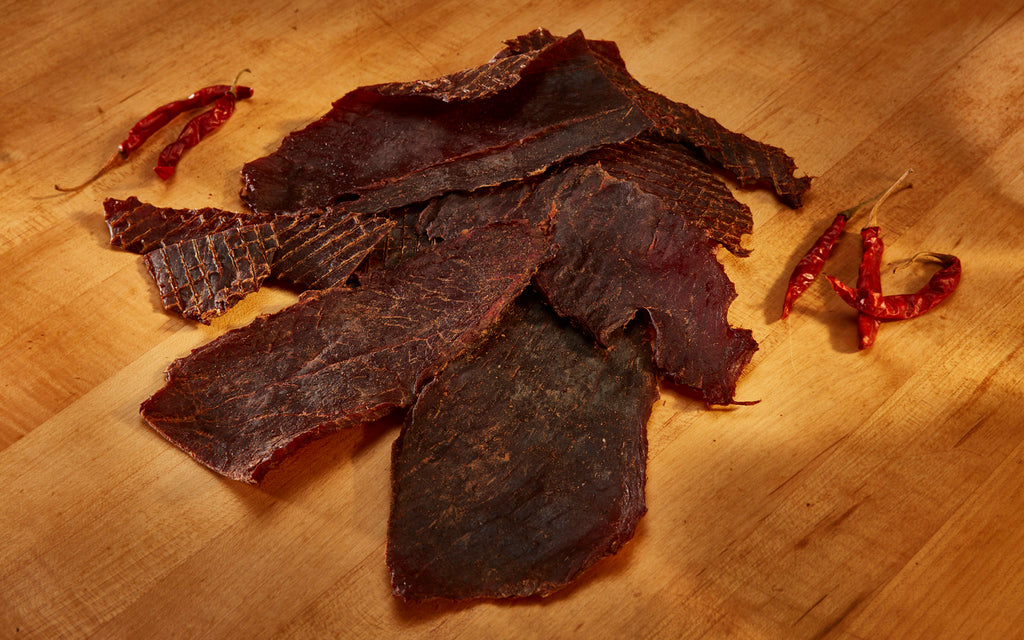
A Butcher’s Guide To Beef
May is Beef Month so get your grill ready!
If you’ve ever been asked what your favorite cut of steak is and responded “regular steak,” it’s time for a beef education. Knowing the grades and cuts will help you order with confidence and discover the delicious differences between them. Get ready for a crash course in beef:
Know your grades.
First thing to note is that there are eight grades of beef, but only the top three—prime, choice, and select—are identified when meat is sold at retail. Prime is the highest grade. It’s produced in limited quantities and most often found at fine restaurants and some specialty shops. Choice and select are the grades of beef typically available, respectively, in the service and self-service meat case at the grocery.
The difference in these grades is the marbling. You’ve probably heard someone say they prefer a steak with more marbling. This refers to the flakes of fat disbursed throughout the muscle. It has nothing to do with the exterior fat. It makes a juicy steak even tastier. It is a top priority for Alewel’s Country Meats to select beef that will provide the best marbling and flavor for our customers.
Make the cut.
There are more than five dozen different beef cuts available today, and many of them have multiple names (Kansas City Steak and New York Strip are both Top Loin Steaks). Newer cuts of beef like Flat Iron Steak and Ranch Steaks are from cuts of meat that were usually part of a beef roast.
Some of the most common are:
- T-Bones and Porterhouse
- Ribeyes
- Fillets
- Sirloins
Be your own butcher.
Meat is expensive. That’s simply a fact. And since most of what we cook on the grill is going to be meat, we need to be smart about it. Choose less expensive cuts of meat while trying not to sacrifice quality. You can do this by avoiding specialty cuts. Frequently butchers charge more for some cuts of the same piece of meat. If you look through the meat counter at the grocery store, you can see what I am talking about.
For this reason, it is a good idea to learn how to carve your own cuts. Buying large “primal” cuts of meat is usually cheaper. All you have to do is cut these into small pieces. For instance, buy whole Rib Eye and cut it into Steaks.
Grill it right.
You do not want to overcook steak. Always start with a clean grill (see our cleaning how-to) – put a light coat of vegetable oil on to prevent sticking. Never use spray cooking oil though.
Cooking Steps:
- Cook uncovered over medium-high heat
- Pat dry (excess moisture prevents browning) and a dry surface results in better searing and caramelization
- Only turn your steaks 1 time – never use a fork
Recommendations on cooking times over direct heat:
- 1” steaks: 5 to 6 minutes per side for Medium-Rare to Medium
- 1.5” steaks: 7 to 8 minutes per side for Medium-Rare to Medium
Recommendations for cooking over indirect heat:
- 1” steaks: 7 to 8 minutes per side for Medium-Rare
- 1.5”steaks: 10 to 12 minutes per side for Medium Rare
Season your steak after you take it from the grill. When you start with a prime or choice steak, you can season with salt and pepper but don’t use sauce. And as always, let rest for 5 minutes before serving – remember the steak will continue to cook.
Now make your way to Alewel’s to pick out your steak to celebrate Beef Month!




 We offer 3, 6, and 12 month programs for our
award-winning beef jerky. Join our monthly jerky
program today to get award winning meats delivered
directly to your doorstep!
We offer 3, 6, and 12 month programs for our
award-winning beef jerky. Join our monthly jerky
program today to get award winning meats delivered
directly to your doorstep!
 Alewel’s has competed on the national stage for over 50
years. Most recently recognized in “REAL SIMPLE
MAGAZINE’s April 2018 edition as Best Original Beef
Jerky! “Tasters fell for the classic chew and mild kick”
Alewel’s has competed on the national stage for over 50
years. Most recently recognized in “REAL SIMPLE
MAGAZINE’s April 2018 edition as Best Original Beef
Jerky! “Tasters fell for the classic chew and mild kick”